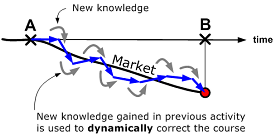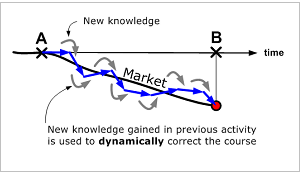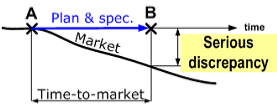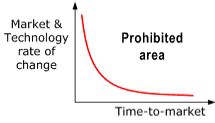Within product development there are two views: the presently dominant static, and the new dynamic as represented by for instance DPD, Dynamic Product Development. Presented as opposites we get two cases.
Product development prerequisites
The world around us changes faster than before. Market dynamics increase, fashion changes faster, trends come and go, and product life span decreases. Time-to-market is critical - a little to late and your product flops.
New technology is constantly developed that can make the old one - just old. New legislation changes conditions for design, production, sales, service and destruction/recycling of products.
Static methods fail
If you, in a milieu as described above, start product development with a detailed specification and a detailed timeline and see product development as a question of delivering according to specification and to follow the plan, then there will be severe problems to your business.
Matters will be even worse if you opt for a serial/sequential development strategy (javelin method) with different phases run through sequentially. If you then slow down the project by using gates, catastrophe is lurking.
Dynamic methods work
Since the world is changing we can not know beforehand exactly what the product should look like that will best fit the market at a future time of sale. Therefore we must develop with a continuous, flexible and agile adjustment to shifting circumstances. This must be the characteristic of the system/process itself. The organization must quickly react to new impulses and newly gained knowledge.
Only competently managed self-organizing organizations driven to the edge of chaos possess these qualifications. Methods with this philosophy are agile programming, maneuver warfare, extreme programming, and dynamic product development
Conclusion













